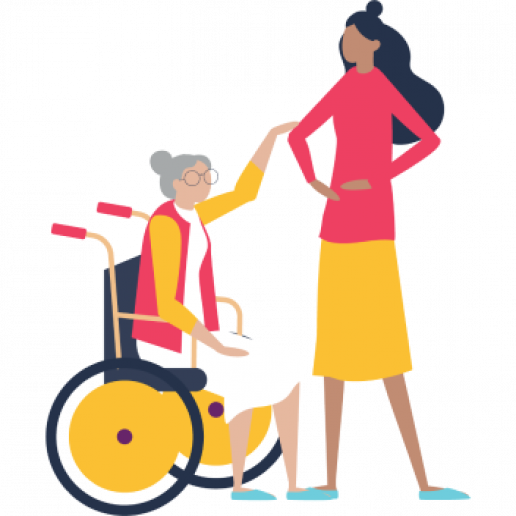
Learn the lingo
School life has a language and vocabulary all of its own. If things are getting lost in translation, check our list of words, phrases and abbreviations used in schools.
ALNCO: All schools in Wales have an Additional Learning Needs Co-ordinator. The ALNCO is responsible for managing Special Educational Needs (SEN) within the school. The ALNCO, with the Headteacher and Governing Body, plays a key role in the development of the SEN policy and provision in the school.
ARE: Age related expectations
Blending: The merging together of the separate sounds in a word
CAHMS: Child and Adolescent Mental Health Services
CATS: Cognitive Abilities Tests, used in some primary and secondary schools. They are designed to assess strengths and weaknesses in reasoning
Circle time: When the teacher brings the children together to share news or discuss values. The class sit in a circle on chairs or on the floor.
DfE: Department for Education
Digraph: Two letters that represent a single sound. For example, “sh” or “ch”.
EAL: English as an additional language.
Early Help Assessment (EHA): A tool used to identify children and families who need support.
Early Years Foundation Stage (EYFS): The regulatory and quality framework for children between birth and the academic year in which they turn five.
Fine motor skills: The skills that involve using smaller muscles of the hands, like using a pencil or scissors, building with Lego and doing up buttons.
Free play: A time when children choose their own play activities (indoors or outdoors) with little adult direction or intervention.
Gifted and talented/More able/Most able/High Learning Potential: The terms that are used to describe children who are attaining at a high level at school, or have the potential to.
Golden time: A strategy used to promote positive behaviour. Children stop work and spend time doing special, enjoyable activities for a period of up to an hour, usually on a Friday.
Gross motor skills: The skills that involve whole body movement, using large muscles like standing, walking, running and jumping. They also include hand-eye coordination skills like throwing, catching and kicking.
Guided reading: A method of teaching that involves reading with children in small groups so that their individual needs can be met.
High-frequency words: The words that occur most often in written texts. They include ‘the’ and ‘and’.
Home–school agreement: Non-binding statement explaining the school’s aims and values, the responsibilities of both school and parents, and what the school expects of its pupils.
INSET day: In-Service Education and Training days for teachers – a day off for the children!
LA: Local Authority (your local council)
Learning objective (LO) or We are learning to (WALT): Describes what children are expected to learn or achieve from a task or activity.
LSA (see also TA): Learning Support Assistants work closely with teachers and support the children with their learning activities in class.
NQT: A newly qualified teacher in their first year of teaching.
Number bonds: Simple addition sums that your child can learn to memorise and recall automatically.
Number line: A line with numbers on it used to teach maths by providing a visual representation of numbers.
Number sentence: An arrangement of numbers and symbols, for example 6 + 5 = 11.
Parental engagement: The partnership between home and school, where schools actively reach out to parents and parents are committed to supporting their child’s learning and development.
Partitioning: A method of working out maths problems by splitting the numbers into simpler units.
Phoneme: A unit of sound – examples would be the noises you make when you say “t” or “k”. They can be put together to make words.
Phonics: A method for teaching reading and writing by developing the ability to hear, identify, and manipulate units of sound.
PSHE: Personal, Social and Health Education.
Pupil Premium: additional funding for state schools in England to raise the attainment of disadvantaged pupils of all abilities and to close the gaps between them and their peers.
SATS: Standard Attainment Tests are compulsory tests in primary schools in England. Tests are taken in Years 2 and 6. Read more about SATs.
SEN/SEND: Special Educational Needs/Special Educational Needs and Disabilities. The needs of children with a learning difficulty which means they require special educational provision either in mainstream or specialist schools.
SLT: The Senior Leadership Team. Accountable to the governing body for the leadership and management of the school. The team includes the Headteacher or Principal, Deputy Head or Vice Principal and other key teaching staff.
SPAG: Spelling, Punctuation and Grammar.
SpLD: Specific Learning Difficulties, such as dyslexia or dyspraxia.
Statement of Special Educational Needs: A legal document that sets out a child’s needs and the extra help they should get.
TA(see also LSA): Teaching Assistants work closely with teachers and support the children with their learning activities in class.



